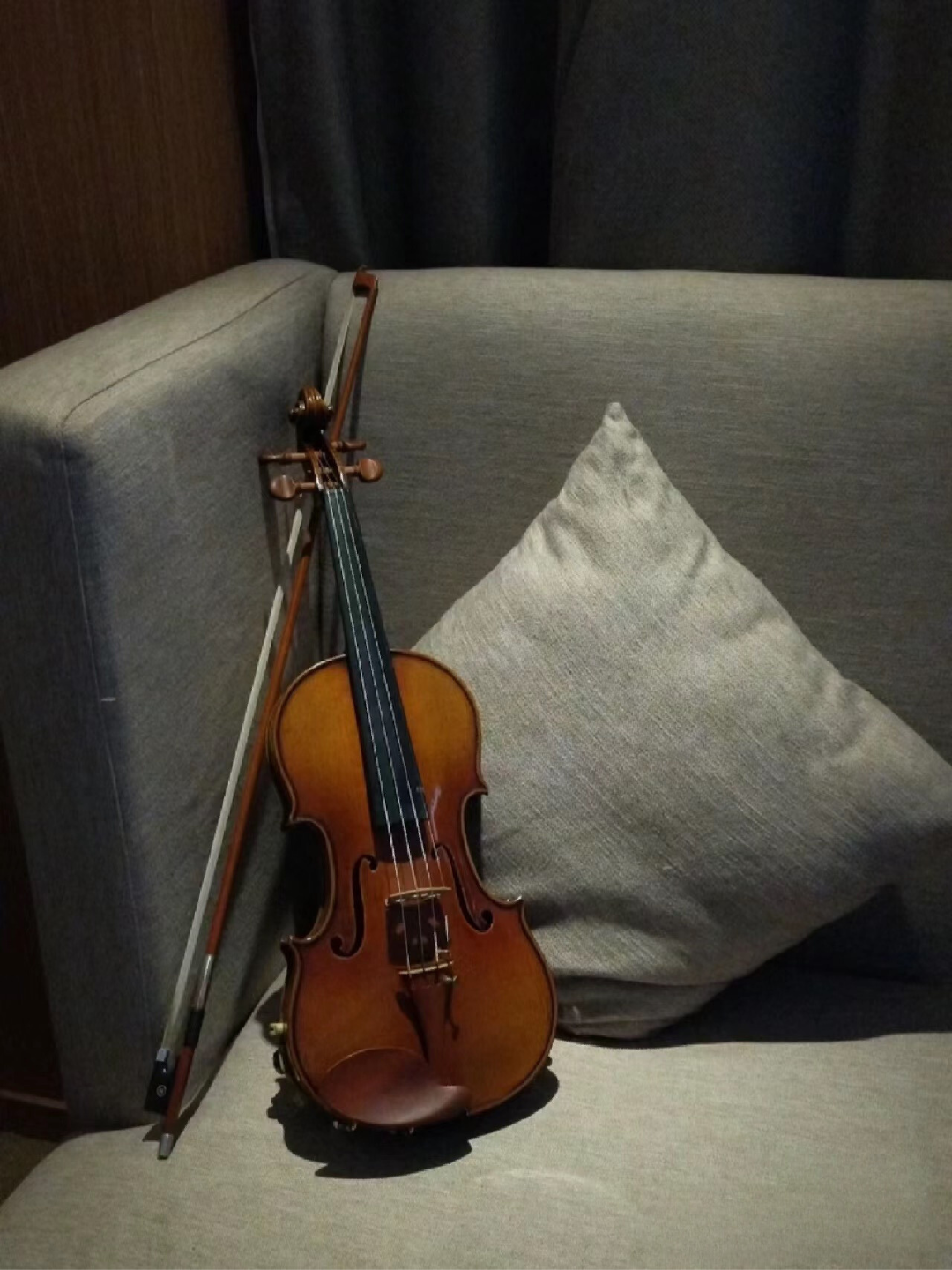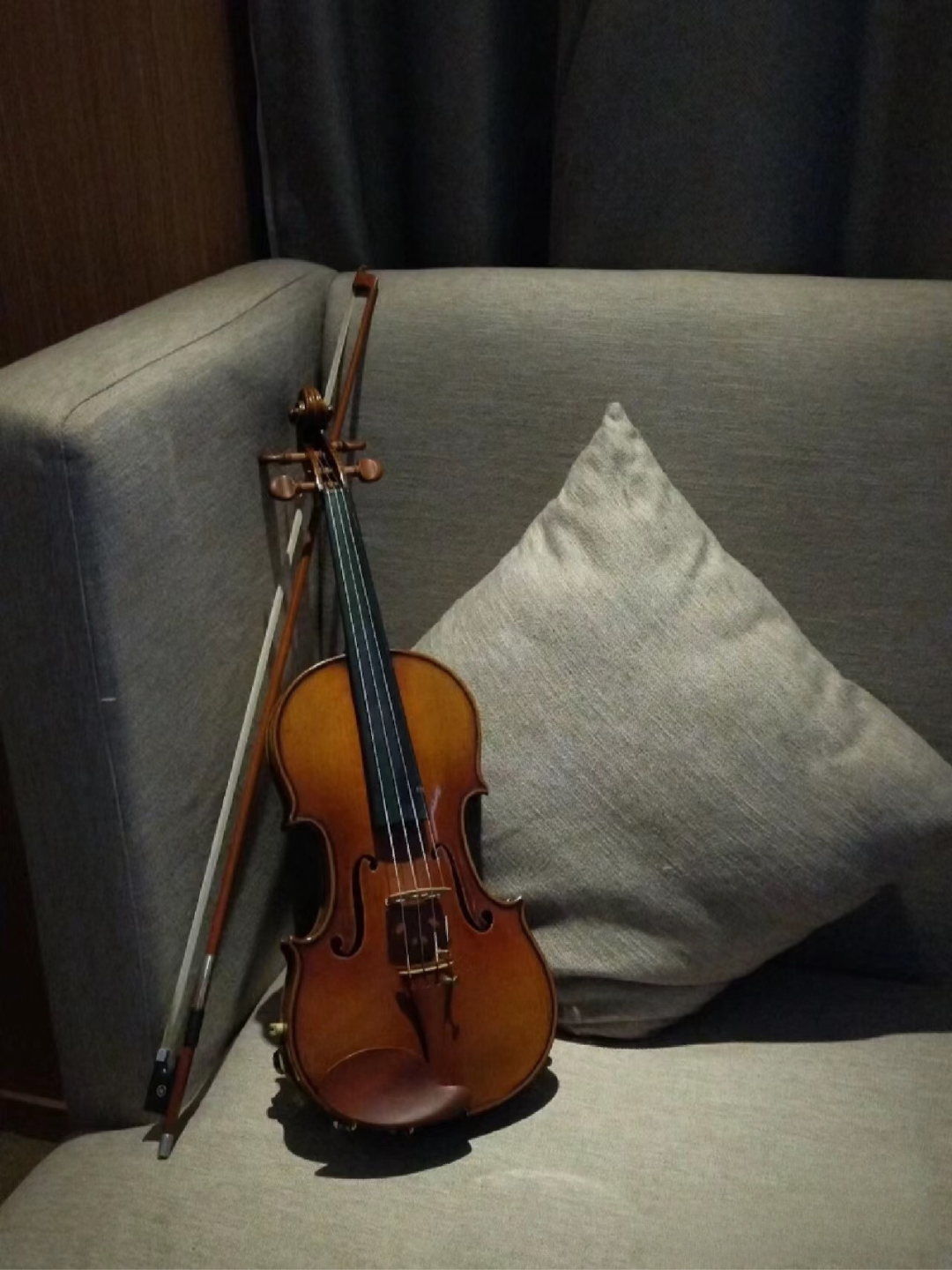飛騰音樂
Violin Violin Class (Mongkok Main Store)
Violin Violin Class (Mongkok Main Store)
Couldn't load pickup availability
• Fundamentals of Music
• Understanding Standard Notations
• Basics of Fingerings
• Solfege
• Bowing Techniques
• Vibrato Training
• Ear Training
• Chord Concepts
• Soloing Over Chords
Recommended for:
• Total beginners with no musical experiences
Do I need to own a violin?
Yes, we strongly encourage all students to purchase their own instruments for home practice. For beginners, all you need is a decent entry-level instrument to get started . As you improve over time, you may consider upgrading your instruments.
Optional Classical Examinations:
Students may also request to take graded ABRSM examinations as independent candidates. The Associated Board of the Royal Schools of Music (ABRSM) is an examinations board and registered charity based in London, UK, which provides examinations in music at centres around the world.
SETUP
Parts of the Violin & Bow — Tightening and Loosening the Bow — Violin Strings — Violin and Bow Sizes — Chin Rests — Shoulder Rests — Rosin — Mute and Practice Mute — Violin Cases — Amplification — Electric Violins — Buy or Rent? — Instrument Types — Instrument Quality — Where to find a violin — Testing Violins — Choosing a Bow — The Buying Process — Buying 'Second Hand'
**************************************************** ************************************
Checklists (Building Good Habits) — Establishing Good Posture — Understanding and Minimising Tension — Breathing — Balance — Holding the Violin — Holding the Bow — Tuning the Violin — Using Tuning Apps — How to Make a Sound! — Plucking (Pizzicato) on Open Strings — Using the Whole Bow (Triangle, Square, Point) — Bowing (Arco) on Open Strings — Up Bow and Down Bow — Basic String Crossings — Straight Bows — Bowing Patterns with Simple Rhythms on Open Strings — Simple Melodies Based on Open Strings — Bow Changes — Basics of Sound Production (Speed, Weight, Point of Contact) — Bow Tilt — Producing a Clear, Pure, Resonant Sound — How to Practise — Preparing For Your First Performance!
Scales and Arpeggios
No Scales and Arpeggios Yet!
Music Theory
Recognising the Open Strings (G, D, A, E) on the Stave — Understanding the Main Note Values and How They Are Notated — Knowing the Symbols for Up Bow and Down Bow
**************************************************** ************************************
First Position — Left Hand Shape and Placement — Left Wrist in Relation to Arm — Using the Left Hand Fingers (1st, 2nd, 3rd, 4th) — Finding the Right Amount of Left Hand Finger Pressure — Tones and Semitones — Left Arm “Swing” — Intonation: Develop Skills for Playing In Tune — Basic Finger Patterns — Pizzicato — Separate Bows and Slurs — Pattern Building: Develop Physical Coordination Between Left and Right Hands — The Straight Bow — Varieties of Bow Tilt — Flexibility of Right Hand and Wrist — Pronation and Supination — Functions of Fingers on the Bow — Using the Whole Bow (Heel to Tip) — Motions of the Right Arm — Basic Bow Division (Whole, Half, Quarter) — Smooth String Crossings (Exercises) — Retakes — Dynamics: Playing Loudly and Quietly — “Hairpins”: Crescendo and Diminuendo — Accents — Dotted Rhythms and Syncopation — Using the Metronome — Achieving a Sense of Character and Style — Distraction Techniques and Automaticity — Playing Without Looking — Efficient and Effective Practi ce Structure!
Scales and Arpeggios
Scales:
1 Octave: G, D, A majors — G, D, A minors
2 Octaves: G, A majors — G minor melodic and harmonic, A minor
Arpeggios:
1 Octave: G, D, A majors — G, D, A minors
2 Octaves: G, A majors — G minor melodic and harmonic, A minors
Music Theory
Letter Names of Notes — The Stave and Clef — Reading Notes on the Stave — Ledger Lines — Time Values of Notes — Bars and Time Signatures — Sharps, Flats, Naturals — Key Signatures — Tones and Semitones — The Scale — Degrees of the Scale — The Arpeggio — Major and Minor — Basic Intervals — Rests — Ties — Dotted Notes — Accidentals — Note Groupings in a Bar — Tempo Markings, Dynamics, Repeat Signs, Slurs, Ties, Accents — Metronome Marks
**************************************************** ************************************
Half Position — Extensions — Legato and Staccato — Tenuto — Détaché — Portato — Double Stops on Open Strings — Playing in Different Parts of the Bow — Variety of Bow Divisions — Trills — Tremolo — Triplets — Grace Notes and Ornaments — Glissando — Basic Phrasing — Left Hand Pizzicato on Open Strings — Greater Use of 4th Finger to Avoid Open Strings — Tempo: Slowing Down and Speeding Up
Scales and Arpeggios
Scales:
1 Octave: Bb, B, E, F majors — Bb, B, E, F minors
2 Octaves: Bb, B majors
Arpeggios:
1 Octave: Bb, B, E, F majors — Bb, B, E, F minors
2 Octaves: Bb, B majors
Music Theory
Triplets — Triads — Notating Staccato, Legato, Tenuto, Portato — Simple and Compound Time — Relative Major and Minor Keys — Harmonic and Melodic Minor Scales — Major and Minor Intervals
**************************************************** ************************************
Second Position — Shifting (1st and 2nd Position) — Chromatic Patterns — Double and Triple String Crossings — Spiccato — Martelé — Hooked Bowing — Double Stops (One Finger Plus Open String) — Understanding the Motions Involved in Vibrato — Basic Vibrato Exercises — Rubato — Col Legno — Changing Quickly Between Arco and Pizzicato
Scales and Arpeggios
Scales:
1 Octave: Ab Major, C major, Eb major — Ab, C, Eb minors
2 Octaves: Ab major, C major — G#, C minors
Arpeggios:
1 Octave: Ab, C, Eb majors — Ab, C, Eb minors
2 Octaves: Ab major, C major — G#, C minors
Chromatic:
1 Octave: Starting on Open G, Open D, Open A
2 Octaves: Starting on Open G
Music Theory
Upbeats — 32nd notes (demisemiquavers) — 64th notes (hemidemisemiquavers) — Octave Transposition — Octave Signs — First and Second Time Bars — Intervals in Detail (Perfect, Augmented, Diminished)
**************************************************** ************************************
3rd Position — Shifting (1st through 3rd Position) — Exploring Different Types of Shift — Expressive “Slides” (Glissando and Portamento) — Sautillé — Basic Natural Harmonics (Octave Above Open String) — Double Stops (Using Two Fingers) — Irregular Time Signatures — Continuous Vibrato on Long Notes — Sul Tasto — Sul Ponticello — String Crossings with Détaché, Staccato, Slurs, Martelé — Good Tone Quality at All Dynamics — Chamber Music: Collaboration and Interaction With Other Musicians
Scales and Arpeggios
Scales:
2 Octaves: Db, D, Eb, E majors — Db, D, Eb, E minors
Arpeggios:
2 Octaves: Db, D, Eb, E majors — Db, D, Eb, E minors
Diminished Sevenths:
2 Octaves: Starting on G, Ab, A, Bb
Dominant Sevenths:
2 Octaves: In the keys of C, D, Eb
Chromatic:
2 Octaves: Starting on Ab, A, Bb, B, C
Music Theory:
Double Whole Notes (Breves) — Double Dots — Duplets and Other Tuplets — Double Sharps and Double Flats — Enharmonic Equivalents — Technical Names of Notes in the Scale — Chords — The Chromatic Scale — Ornament Signs — The Circle of Fifths
**************************************************** ************************************
4th, 5th, 6th, 7th, 8th Positions — Shifting (1st through 8th Positions) — Reliable Intonation When Shifting — Vibrato With Variation of Speed and Width — Triple and Quadruple Stops (Chords) — Spreading Chords — Advanced Pattern Building (Left and Right Hand) — Rapid String Crossings — Rich Variety of Tonal “Colours” — Idiomatic and Sensitive Musical Shaping — Fingering and Bowing Choices to Maximise Expression (Not Safety!) — Bartók (“Slap”) Pizzicato
Scales and Arpeggios
Scales:
2 Octaves: F, F# majors — F, F# minors
3 Octaves: G, Ab major, A major — G minor melodic and harmonic, G#, A minor
Arpeggios:
2 Octaves: F, F# majors — F, F# minors
3 Octaves: G major, Ab major, A major — G minor melodic and harmonic, G#, A minors
Diminished Sevenths:
2 Octaves: Starting on B, C, C#, D
Dominant Sevenths:
2 Octaves: In the keys of Db, E, F, G
Chromatic:
2 Octaves: Starting on Db, D, Eb
Music Theory
Regular and Irregular Time Signatures — Transposition — Compound Intervals — Identifying Chords — Inversions of Triads — Cadences
**************************************************** ************************************
All Positions — Shifting (All Positions) — All Tuplets — Fast Passagework in a Wide Variety of Rhythm and Bowing Patterns — All Natural Harmonics — Cadenzas — Pizzicato Chords and “Strumming” — Double Stops: Proficient in Thirds, Sixths, and Octaves — Ricochet — Arpeggiated Chords — “Springing” Arpeggiated Chords — Rapid Scales and Arpeggios
Scales and Arpeggios
Scales:
3 Octaves: Bb, B, C, Db, D majors — Bb, B, C, C#, D minors
Arpeggios:
3 Octaves: Bb, B, C, Db, D majors — Bb, B, C, C#, D minors
Diminished Sevenths:
2 Octaves: Starting on Eb, E, F, F#
Dominant Sevenths:
2 Octaves: In the keys of Gb, Ab, A, Bb, B
Chromatic:
2 Octaves: Starting on E, F, F#
Double Stop Scales: Thirds, Sixths, Octaves
Broken Thirds: 2 and 3 Octaves
Music Theory
Harmony — Chord Progressions — Sequences — Modulations
**************************************************** ************************************
Artificial Harmonics — Left Hand Pizzicato (Stopped Notes) — Simultaneous Arco and Left Hand Pizzicato — Up Bow Staccato — Down Bow Staccato — “Flying” Staccato — Bariolage — All Combinations of Double Stops and Chords Within Limit of Hand-Size!
Scales and Arpeggios
Scales:
3 Octaves: Eb, E, F, F# majors — Eb, E, F, F# minors
4 Octaves: G, Ab, A majors — G, G#, A minors
Arpeggios:
3 Octaves: Eb, E, F, F# majors — Eb, E, F, F# minors
4 Octaves: G, Ab, A majors — G, G#, A minors
Diminished Sevenths:
3 Octaves: All
Dominant Sevenths:
3 Octaves: All
Chromatic:
3 Octaves: Starting on G, Ab, A, Bb, B, C, C#, D
Double Stop Scales: All
Broken Thirds: All
Scales in Artificial Harmonics: All
Music Theory
Figured Bass — Composition — Harmonising Melodies — Score Reading — Deep Knowledge of Music History and Awareness of Styles
**************************************************** ************************************
Double Stop Tenths — Double Stop Trills (Study) — Double Harmonics — Chromatic Glissando — Scordatura Tuning — Quarter Tones — Rapid Four-Octave Scales and Arpeggios — Fingered Octaves — Subharmonics — Col Legno Tratto — Fingerboard “Slaps” — “Scratch” or “ Crunch” Tone — “Chopping” — “Seagull” Harmonic Glissando — “Extreme” Sul Tasto and “Extreme” Sul Ponticello — Circular Bowing — Playing Behind Bridge — Fingernail Pizzicato — Improvisation
Scales and Arpeggios
All possible Scales and Arpeggios!
Scale Systems such as those by Carl Flesch and Ivan Galamian
Share




